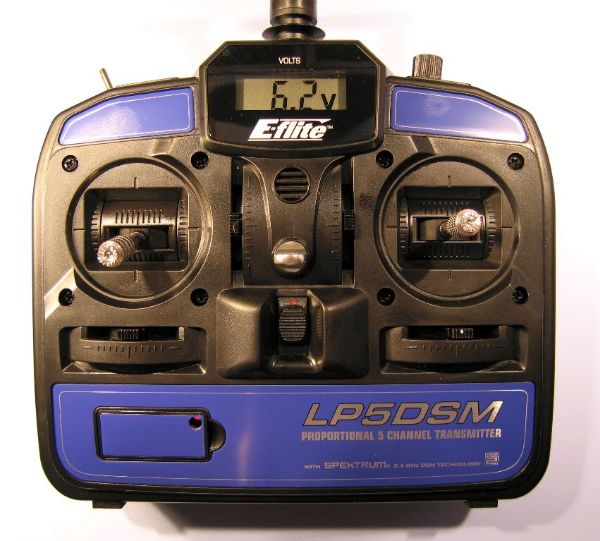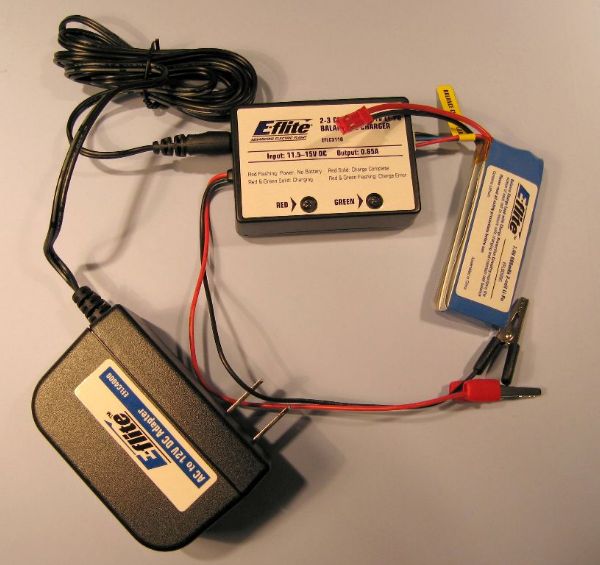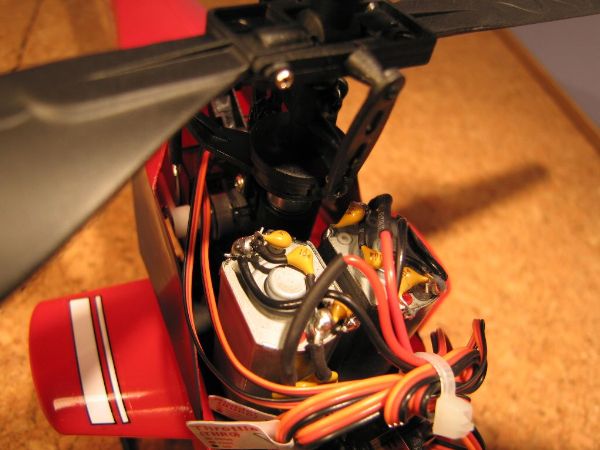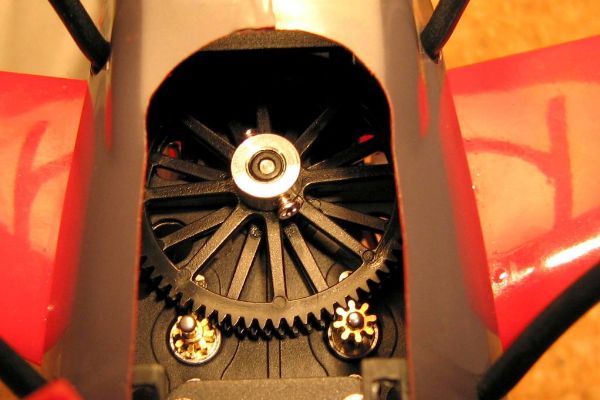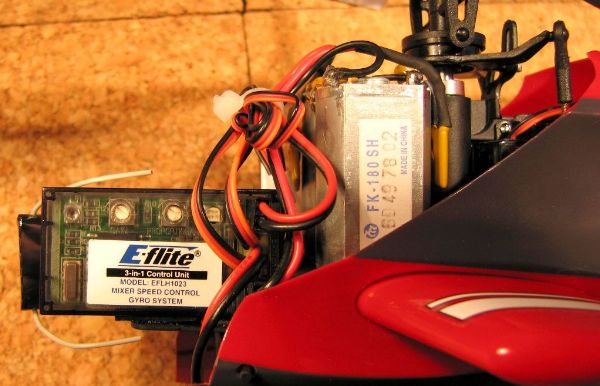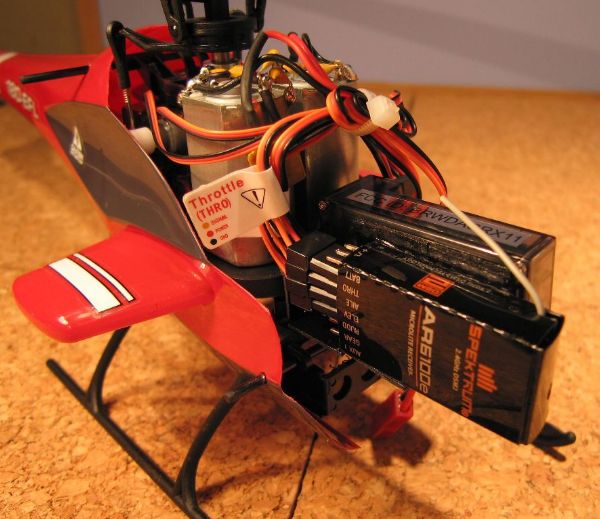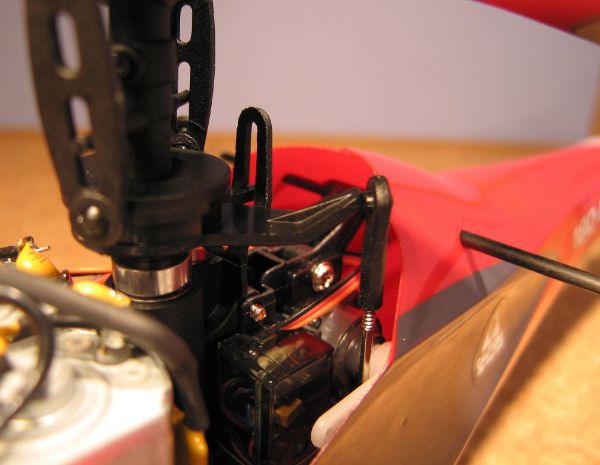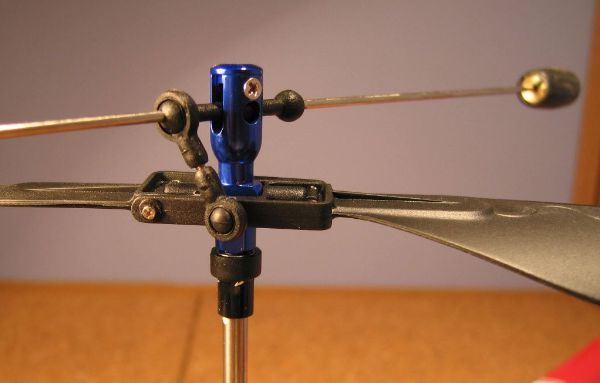
E-flite Blade Cx2 R/C Helicopter Review
What is it about Helicopters and Planes, the freedom of driving in a three dimensional space or the cool factor that makes most of us who have tried RC vehicles yearn to own one. The prohibitive cost of these type of RC's meant you had a very expensive investment in a product that literally crashed and destroyed itself if a skilled operator was not at the helm. Helicopters apparently are the hardest to master and require many flight hours before gaining the required skills to really enjoy owning and operating it. The advent of RC Flight simulators has helped tremendously as we can crash the virtual helicopter or plane as often as we like without the costly repairs until we mange to fly straight and true but the cost of this type of system is still expensive enough that most of us will probably never use it.
The solution was to create an easy to fly helicopter that was inexpensive enough for almost anyone to own, after a few models have come and gone we end up with the E-flite Blade Cx2. The secret to this type of helicopter is the use of counter-rotating blades otherwise known as a Coaxial design.
 |
 |
The Blade Cx2’s coaxial, counter-rotating blades cancel out the rotational torque that makes hovering a conventional helicopter so difficult. Instead of a tail rotor, the Blade Cx2 uses differential rotor speed for tail control so the inherent stability of the counter-rotating blades is preserved in all phases of flight, making this a helicopter just about any first-time pilot can enjoy.
The E-flite Blade Cx2 is a complete package that includes everything so that you will be ready to fly the moment you open the box. I was able to purchase the Blade Cx2 from a local Hobby retailer for $199 which is a very attractive price point for a complete ready to fly Helicopter and as you can see the package includes everything in the photo below.
The entire contents include the following items:
- Interference-free 5-channel transmitter with built-in Spektrum™ 2.4GHz DSM technology.
- 2-cell 7.4V 800mAh Li-Po battery pack with Charge Protection Circuitry.
- 2–3 Cell DC Li-Po Balancing Charger and AC Adapter.
- Assembled Blade Cx2 Helicopter with Coaxial, counter-rotating rotor blades.
- Manual with a Instructional Video CD for a quick flight overview.
- 4 'AA' Batteries for the transmitter.
- Bind Plug, Micro screwdriver, Velcro material and Double sided tape.
The Blade Cx2 is the first ready-to-fly aircraft of any kind to come with advanced 2.4GHz DSM radio control technology built in. With DSM you never have to worry about interference from other RC users, nearby 2.4GHz devices or commercial transmission towers. The unit is well built and has full trim control along with an extra channel that is currently not is use by the Cx2. The left stick when raised will start the coaxial blades turning and is notched to allow you to hold a specific height easily, bringing this stick to the left or right brings the tail of the helicopter in that direction. The right stick when raised allows the helicopter to move forward and the side to side motion of the stick moves the Helicopter side to side. The transmitter will sound an alarm if the voltage indicated on the LCD falls below 4.5V to ensure you are left with enough signal strength to land your helicopter.
The Charging system features a 2–3 Cell DC Li-Po Balancing Charger and the included alligator clips allow you to charge from a 12V Battery and will accept DC voltage from 11.5 to 15V DC. Those of us who wish to charge from an AC outlet can do so with the AC Adapter that is provided. The charger is rated at 0.65A and will charge the include 2-cell 7.4V 800mAh Li-Po battery within 2 hours. The battery has two connectors one is for charging and the other is to connect to the Helicopter RC system.
The photo above is of the twin 180 motors and after a little research they appear to be 'Mabuchi'
FK 180 SH motors and are rated at 7.2 Volts, best guess these turn at 20,000 to 30,000+ rpm based on information from similar type motors. I noticed a Heatsink is available as an option for the motors but I haven't found the motors to run very hot, mind you I only have run them for 14-15 minutes at a time with average throttle input.
This photo is the bottom of the Helicopter, the opening with the gears is the location of the battery compartment (gears are further down the battery just covers the view) and you can see the gearing used to power the pair of coaxial rotors used on the Blade Cx2.
This version of the Blade Cx2 uses the newer 3-in-1 ESC (Electronic Speed Controller) with the Spektrum DSM Receiver (in the manual they refer to the older 4-in-1 unit which contained a receiver). The 3-in-1 ESC has two adjustments, basically the first pot labeled 'Gain' adjusts how sensitive the internal gyro is and the second pot labeled 'Proportional' adjusts the amount of power each motor receives while in flight. I had an issue with my Blade Cx2 as the tail kept slowly rotating to the left no matter how much I adjusted the trim on the transmitter, I resolved the tail drifting problem by slowly adjusting the 'Proportional' pot. I found that when you are slowly adding throttle both rotor blades should begin to spin at the same time, if the upper or lower spins before the other you probably need to adjust the 'Proportional' pot and this should be done before your first flight. I was eager to start flying and ran into all kinds of control problems due to the tail drifting issue so you have been warned!
This photo is of the Spektrum AR6100e 2.4GHz DSM Receiver, I wondered what the heck the big deal was with DSM so I found some information that explains the technology, DSM or Digital Spectrum Modulation is Spektrum's proprietary method of implementing 2.4GHz spread spectrum technology for the R/C industry. DSM divides the 2.4Ghz band into 80 individual channels (frequencies) and incorporates direct sequence spread spectrum with an imbedded GUID (Globally Unique Identifier) code. This translates to up to 80 unique RC vehicles all being used at once with no worries about cross-talk or interference. This may not make a difference if you fly inside alone but out on the field with others you will appreciate the stability DSM technology brings to your RC Helicopter.
This photo shows the 'Swash Plate' that is adjusted by two Sub-Micro servos (one is visible in the photo) the S60 servo's used are feather-light (6.0 grams) and offer superior speed, torque, and precision, the S60 is used in many applications including CCPM control on micro helicopters and tail control on micro to mini helicopters. I found them to be very quick, responsive and very accurate.
The newer version of the Blade Cx2 also comes with a aluminum head/hub and over-current protection to protect the ESC and motors in the event of a blade strike with PTC resettable fuse devices. Positive Temperature Coefficient (PTC) thermistors work by heat, as it heats up, its electrical resistance increases and eventually the resistance of the device is so high that the current through the circuit virtually stops flowing, once the PTC is cooled normal operation returns. This type of device is a rare find on anything in the price range of the Cx2 ($199).
The aggressive new body design looks great and is unlike anything else I've seen on most RC helicopters E-flites choice of Red looks better than the Yellow used by the Blade Cx it replaces.
I had purchased the training package but I was perhaps a little to over-confident and skipped it's installation, now I probably should have used it as I had quite a few blade strikes trying to master the Helicopter. My advice is to remember when training you will be flying low to the ground but that creates a problem of it's own because the air generated by the blades rotating in flight has a tendency to create a back-draft that throws the helicopter off as you get close to any walls or furniture (if present). When flying higher (say close to your shoulders) this problem is minimized but if you are still in training this will make it impossible to simply throttle down as you will be dropping from a height that is guaranteed to damage the helicopter. So a catch 22 so to speak, you can install the training kit which will prevent a lot of blade strikes but as you are close to the ground the flight mechanics are not the same as when hovering at more normal heights. I have managed to slightly bend the main rotor shaft enough that it has a wobble, I figure a few more flights (and a few more blade strikes) I will replace it with the aluminum upgrade parts and try my luck outdoors.
The manual suggests you find a fairly large room to fly indoors and that goes double for training as you'll need lots of space (and height) until you fully understand the controls. I also suggest to be very careful with your movements as a full forward stick along with momentum gained requires twice the distance to reverse without contacting a wall or obstruction. Fly the helicopter with small inputs as it can get moving quickly and wind up someplace you'll regret later (a wall is not fun to hit).
I have one regret and that is related to the battery life, maybe I'm expecting too much as 7-8 minutes seems to be the average flight time reported by others but once you start flying it seems so darn short! I have read that higher capacity batteries can be bought. Be smart and purchase a least one extra battery when you pick up the Blade Cx2 because you'll be running for the charger fairly quickly.
I have had many RC vehicles and nothing compares to flying this Helicopter, it's very maneuverable and the ability to drive in a full three dimensions is truly fun and brings a smile to my face each time I power up the Helicopter (not to mention the attention it attracts). The realm of RC helicopter flight was once for the very patient and was accompanied by fairly restrictive prices but the Blade Cx2 breaks down all the barriers and truly is a Helicopter that almost anyone can fly.
I will add a few videos of the Blade Cx2 in motion so to speak but I still need a few more hours of practice to really make one showing it's capabilities. for now I leave you with one video I found on the Horizon Hobby website, and of course they are selling the unit.
- WMV Video of the Blade Cx2 in action Windows (2.19Mb)
- PDF showing the exploded parts view of the Blade Cx2 (403Kb)
- PDF of the Blade Cx2 instruction manual (3.03Mb)

